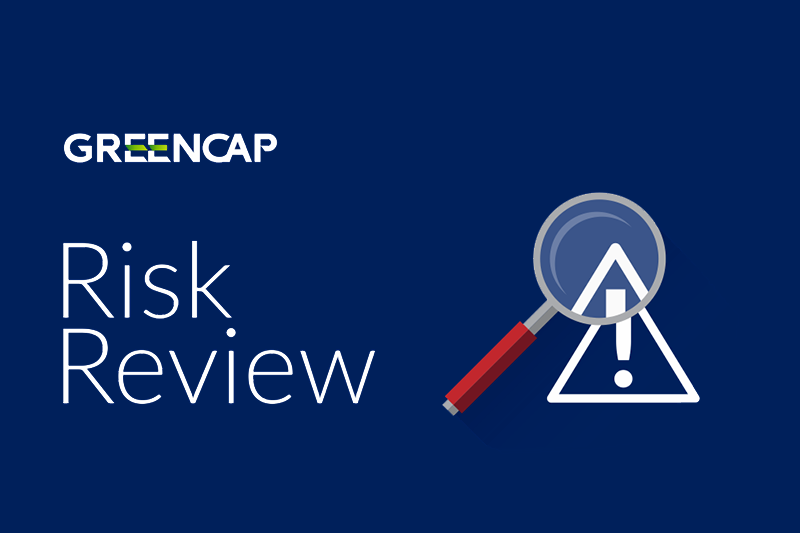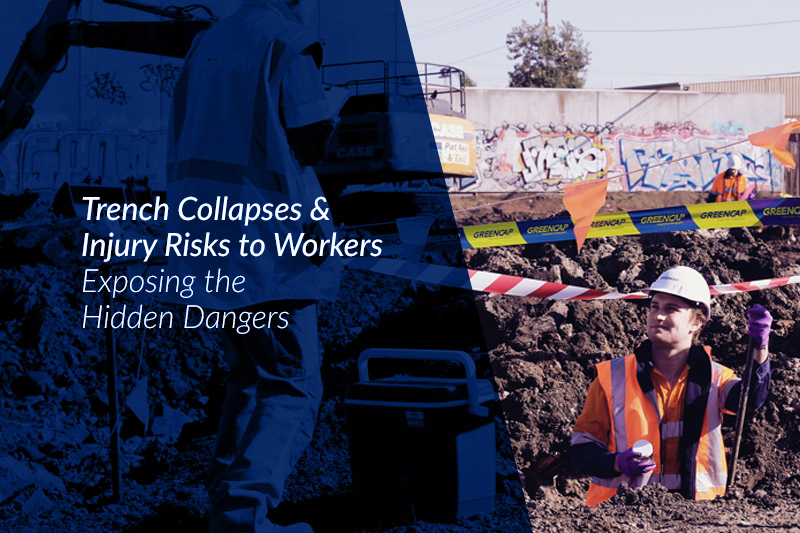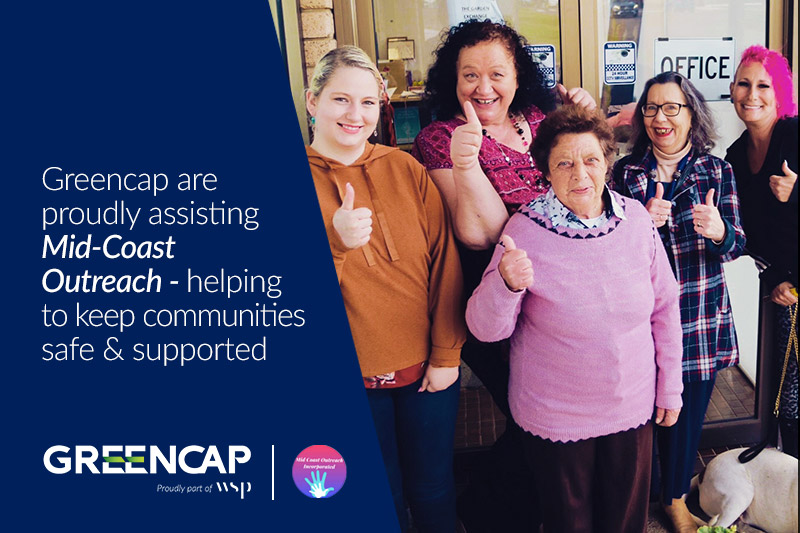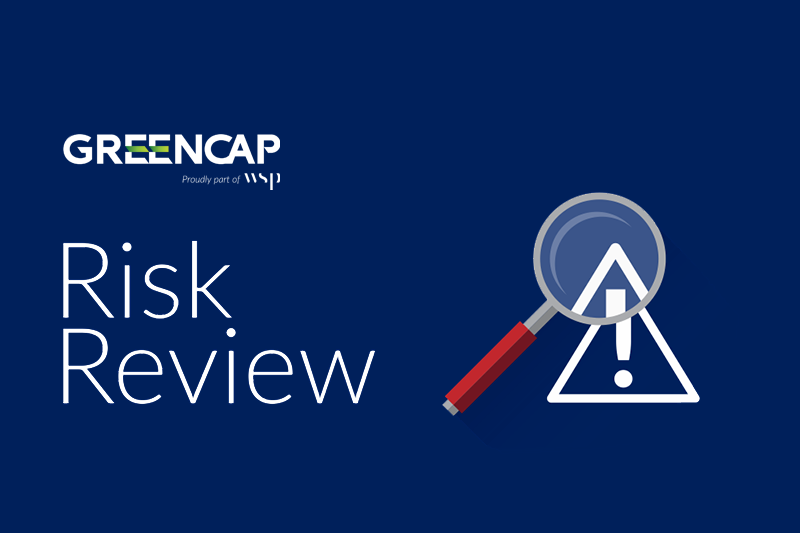News & Insights
Making Water Systems Safer
With an aging population in Australia, and an aging workforce, the number of people susceptible to respiratory infections such as Legionnaires’ disease has the potential to increase in coming years.
This Risk Review intends to assist Greencap’s clients to prepare for upcoming developments related to water risk management in various jurisdictions, as well as to share lessons learnt during consulting projects undertaken by Greencap nationwide. This Risk Review also intends to interpret the roles and responsibilities of various stakeholders including Independent Auditors, criteria for non-compliance with Risk Management Plans (RMPs) and relevant legislation and response by government authorities to non-compliance.
What Is Legionnaires’ Disease?
Legionnaires’ disease is a lung infection acquired through the inhalation of aerosols or particles contaminated with Legionella bacteria. Symptoms can include fatigue, muscle pains, headache, fever, dry cough, shortness of breath, nausea, abdominal pain, vomiting and diarrhoea. Legionellosis (which includes Pontiac fever) is more likely to affect individuals with an underlying illness or a weakened immune system, including people with lung diseases, the elderly and smokers. Ultimately, Legionnaires’ disease can be fatal.
Under certain conditions, Legionella bacteria can grow rapidly in building water systems such as when temperature and nutrient levels are favourable. This can include cooling water systems (typically used for heat rejection in commercial building air conditioning and industrial applications), warm water systems, spa pools, decorative fountains and water features; these systems have the potential to disperse contaminated aerosols that can be inhaled by building users or the general public within the vicinity.
Obligations for Operators
Owners and managers have a duty and legal obligations to ensure water systems in their care are maintained in a safe and sustainable manner; as well as in compliance with state-based legislation throughout Australia (although legislation varies between states, principles are generally consistent with Australian Standard AS/NZS 3666).
Key Responsibilities
Some of the key responsibilities and compliance requirements for Warm Water Delivery Systems and Cooling Water Systems around Australia are summarised below*. This summary is intended to be general in nature and should not be taken as comprehensive or specific advice. For further information or advice specific to your site, please contact your closest Greencap office.
Cooling Tower Systems
State-based regulations prescribe various requirements for cooling tower management, including registration (only applicable in ACT, NSW, SA, Tas and Vic), cleaning, inspection, maintenance requirements and regular water testing requirements.
Requirements for Risk Assessments / Risk Management Plans and associated actions for cooling tower systems in each jurisdiction are summarised in the following table:
| Region | Requirement |
|---|---|
| ACT | Every five (5) years signed by practising engineer, as well as for new or modified systems. |
| New South Wales | Every cooling water system must have a risk management plan to be reviewed between one (1) and five (5) yearly, depending on the risk classification; independent audits will be required annually commencing in the second half of 2019 (more details below). |
| Northern Territory | Every five (5) years as per AS/NZS 3666.3:2011. |
| Queensland | Workplace Health and Safety Queensland's Guide to Legionella Control in Cooling Water Systems, including Cooling Towers (November 2018) recommends having a risk management plan in place and that it is reviewed regularly. |
| South Australia | Annual audit undertaken by local council or a competent person (it is understood some councils may be electing to discontinue providing this service and Greencap consultants will be able to complete this task on behalf of our clients in future). |
| Tasmania | Initial risk assessment and in the event of any changes required by registered engineer. |
| Victoria | Annual review required and/or in the event of significant changes; outcomes must be independently audited by approved auditor. Note: regulations are currently under review and expected to change before the end of 2019. It is understood possible changes may be more prescriptive about cooling tower cleaning and may include penalties for falsifying records. |
| Western Australia | Every five (5) years as per AS/NZS 3666.3:2011. |
Note: many companies operating nationally choose to undertake annual risk assessment / risk management plan reviews on an annual basis nationally, regardless of the state based requirements.
Case Study 1Issue:Greencap’s client was operating a site where risk management plans are not mandatory (not on the eastern seaboard). The water treatment service provider had raised concerns of possible uncontrolled water loss from large cooling water systems due to significant increases in chemical consumption to maintain control. No leaks or overflows had been found during regular site checks by contractors. Greencap’s consultant was able to confirm the cooling water systems were losing water via basin overflow pipes, due to the level rise occurring when the systems shutdown. Accentuating the situation, one of the cooling water systems on site comprised multiple cooling towers which were installed at slightly different heights. While this was not a significant problem during normal operation, when the chillers are off-line it was found that the higher tower would drain via the balance line and the common pump suction manifold into the lower towers causing the system to overflow. Actions:A lead indicator of water loss is low water conductivity (which is related to the concentration of dissolved salts in the water) which will increase when evaporation is occurring, stay constant when the towers are off-line and will decrease as some of the water is replaced with fresh water. Outcome:Improved water efficiency represents greater retention of water treatment chemicals and consequently reduced risk to public health and better asset protection. Learnings:Uncontrolled water loss needs to be avoided as it will invariably compromise the standard of water treatment that is able to be maintained. Remote monitoring can be used to alert maintenance personnel in the event of key water chemistry parameters being out of specified limits, including low water conductivity, which can improve response times to detect and rectify faults. Sometimes a fresh perspective is all that is needed to identify the issues.
|
The next phase of Cooling Water System Compliance in NSW: “Independent Audits”
It has been almost a year since the NSW Public Health Amendment (Legionella Control) Regulation 2018 was published. The Public Health Amendment aimed to achieve a risk-based approach to managing cooling water systems and focused on:
- Qualifications required to be a competent person responsible for installation, operation and maintenance of cooling water systems (CWS);
- Development of Risk Management Plans (RMP) for every cooling water system in NSW;
- Notification of the reportable Legionella and heterotrophic colony count to the local government council;
- Changes to the maintenance requirements for cooling water systems; and
- Display of Unique Identification numbers on cooling towers.
Since then, training modules have been rolled out to assist relevant stakeholders achieve and demonstrate competency to undertake risk assessments and manage the risks. Whilst NSW Health have endeavoured to define the scope of managing risk, it remains to be seen how the process of identifying and addressing the inherent risk and further shifting towards residual risk will harmoniously work towards achieving one goal; that is, to actually improve outcomes for public health. Some uncertainty remains within the industry on implementation and next steps including obligations around the use of various NSW Health Approved Forms as tools to formalise communication with the Local Government Authority (LGA); as well as uncertainty around the role of an Independent Auditor.
What are Independent Audits?
Independent audits in the context of cooling tower compliance in NSW are mostly document-based reviews of compliance with the Risk Management Plan (RMP) and NSW Regulations.
Purpose:
As stated in the Legionella Control Cooling Water Systems NSW Health Guidelines, the purpose of the independent audits is to ensure that the occupier and duly qualified person manage the Cooling Water System in accordance with the NSW Public Health Regulation 2012, and that any actions, control strategies and monitoring required by the Risk Management Plan are implemented within the required timeframe.
Scope:
- Document-based evaluation of compliance with the RMP and NSW Regulations.
- An on-site inspection-based audit may be conducted on a case-by-case basis.
- To assess management of Cooling Water Systems (CWS) in terms of compliance with RMP (including inspection, sampling, testing, maintenance and issue rectification) and the NSW Regulations.
- The audit shall be conducted using documents generated within the 12-month audit period and sight evidence and timelines required by the RMP and Regulation; and
- Assess implementation and compliance with timeframes for the above actions, control strategies and monitoring required by the RMP.
Note: The scope of the independent audit does not assess:
- compliance with optional recommendations, suggestion or advisory notes; or
- the effectiveness or accuracy of the risk assessment.
Roles and Responsibilities:
Occupiers are ultimately responsible for the CWS under the Public Health Act 2010. An audit must be undertaken to ensure compliance with the risk assessment over a 12-month audit period after the first or any additional risk assessment has been carried out. The audits shall then be undertaken every 12 months thereafter. An audit must be completed within two (2) months after the end of the audit period. The certificate of audit completion must be submitted to the LGA within seven (7) days.
It is noted that to be eligible for approval to be an Independent Auditor by the NSW Health Secretary, a person should NOT be:
- The person who undertook the risk assessment;
- The occupier;
- Duly Qualified Person (DQP) for the previous 5 years (Examples of DQP are Owners, mechanical contractors, water treatment service providers or person conducting the risk assessment on the CWS); or
- Laboratory person carrying out monthly testing of the CWS for the previous 5 years.
Greencap is preparing a team of accredited auditors to provide this service to ensure compliance for our valued clients with cooling water systems in NSW, as we have been doing in Victoria since independent audits became a requirement eighteen years ago (unless Greencap completed the RMP, to avoid conflict of interest).
Case Study 2IssueWith recent changes to the legislative framework in NSW, it appears there remains some lack of awareness in relation to obligations for owners and managers. This was recently demonstrated while Greencap was preparing a risk management plan (RMP) on behalf of one of our clients. Our consultant identified during the assessment that the NSW Health Approved Form 4: Notification of reportable test results was not used by the occupier to notify reportable Legionella count to the local government authority (LGA). Actions:The occupier had reported the counts to the LGA in a timely manner; however, not on the NSW Approved Form in accordance with clause 13R of the NSW Regulation. There was no action taken from the LGA. Outcome:Although in this case there were no penalties or repercussions, the NSW Public Health Amendment (Legionella Control) Regulation 2018 indicates a maximum penalty of 20 penalty units to the occupier (i.e. currently a fine of up to $2,200). Learnings:Always using the NSW Approved Forms (where relevant) will ensure compliance, prevent penalties and provide quick access and investigation trail to relevant parties including the health department in case of an outbreak. If you’re not sure, seek advice.
|
Warm Water Delivery Systems
State-based regulations also prescribe varying requirements for the management of warm water delivery systems. Depending on which jurisdiction, this may include registration, a risk management plan, minimum frequencies of testing, reporting of testing results, disinfection methods and maintenance requirements. Key requirements for warm water systems in each jurisdiction are summarised in the following table:
| Region | Requirement |
|---|---|
| ACT |
|
| New South Wales |
|
| Queensland |
|
| South Australia |
|
| Tasmania |
|
| Victoria |
|
| Western Australia |
|
Water System Risk Management
Greencap consultants have been assisting clients with Legionella and water system risk management for over three decades, on behalf of many clients across Australia in a wide variety of industries including:
- Hospitals and Health Care Facilities
- Industrials and Manufacturing
- Commercial Premises
- Shopping Centres
- Cold Chain Storage
The Greencap team has a depth of expertise around plant and equipment, including a variety of heating, ventilation and air conditioning (HVAC) systems – particularly in the area of Legionella risk and water system risk management.
Services include:
- Development of tailored Risk Assessments and Risk Management Plans (RMP) for:
- Cooling Water Systems
- Cold and Heated Water Systems
- Water Features
- Car Wash Stations
- Other water systems
- Cooling Water System Independent Audits;
- Risk assessments to ensure compliance in water delivery systems;
- Microbiological testing and corrosion monitoring program management;
- Root cause analysis following adverse results or system failure.
Greencap has a team of water risk management consultants with relevant qualifications and certifications, ensuring our clients receive relevant, specific advice and targeted solutions.
Online Risk Management Tools
Greencap's tailored online reporting system, ContinuONE, enables easy tracking of Legionella and Heterotrophic Colony Count (HCC) results, water chemistry and corrosion results. The water systems’ module allows tracking of cooling tower maintenance schedules and records (e.g. services/inspections and cleans) as well as water testing results. Notifications can be sent to your inbox and escalation pathways can be established if high counts are entered, if scheduled dates are missed, or if there are abnormal trends. Graphical representations of water quality history are also available on your customisable dashboard.
Another way Greencap is Going Further in Managing Risk.
Please contact your closest Greencap office for more information or advice
*based on Greencap’s understanding at the time of writing
The information in this material is not intended to provide, and should not be relied upon, for legal or professional advice and is subject to change.
This material provides general information only and does not take into account your particular needs or circumstances. Before making any decisions, you should assess whether this material is appropriate for you and obtain legal advice tailored to you having regard to your particular needs and circumstances.
Greencap Pty Ltd (Greencap), its officers, employees and agents believe that the information in this material and the sources on which the information is based (which may be sourced from third parties) are correct as at the date of publication. While every care has been taken in the preparation of this material, no warranty of accuracy or reliability is given and no responsibility for this information is accepted by Greencap, its officers, employees or agents. Except where contrary to law, Greencap excludes all liability for this information.
If this material contains links to third party websites, Greencap does not control and is not responsible for the information contained within these websites. None of these links imply Greencap’s support, endorsement or recommendation of any other company, product or service.



Industry News
Risk Review
News
Mid-Coast Outreach & Greencap - Helping to keep communities safe and supported
Risk Review
The Asbestos Register – A cornerstone for managing asbestos
Greencap acknowledges the Traditional Owners of Country throughout Australia and recognises their continuing connection to land, waters and culture. We pay our respects to their Elders past, present and emerging.




